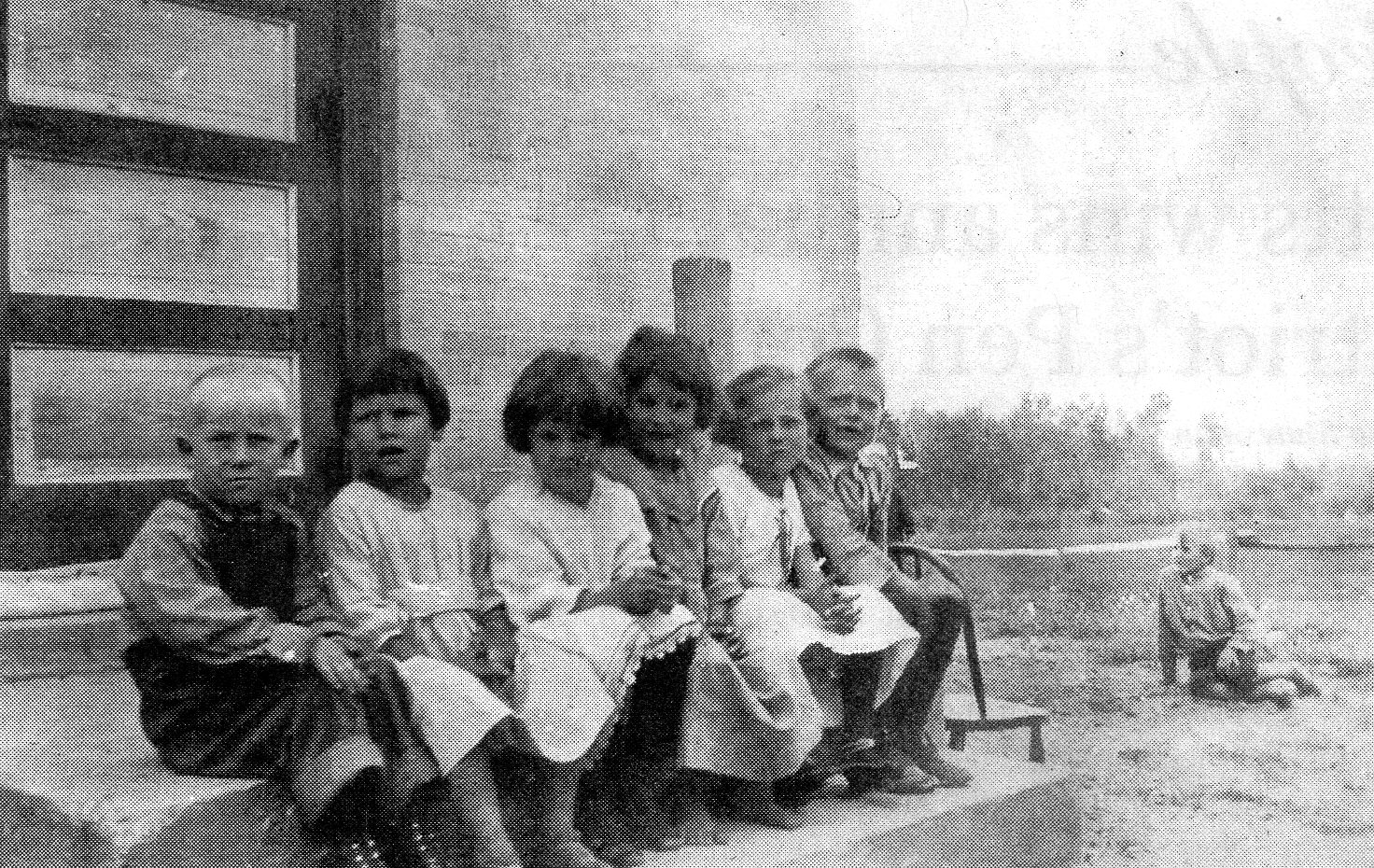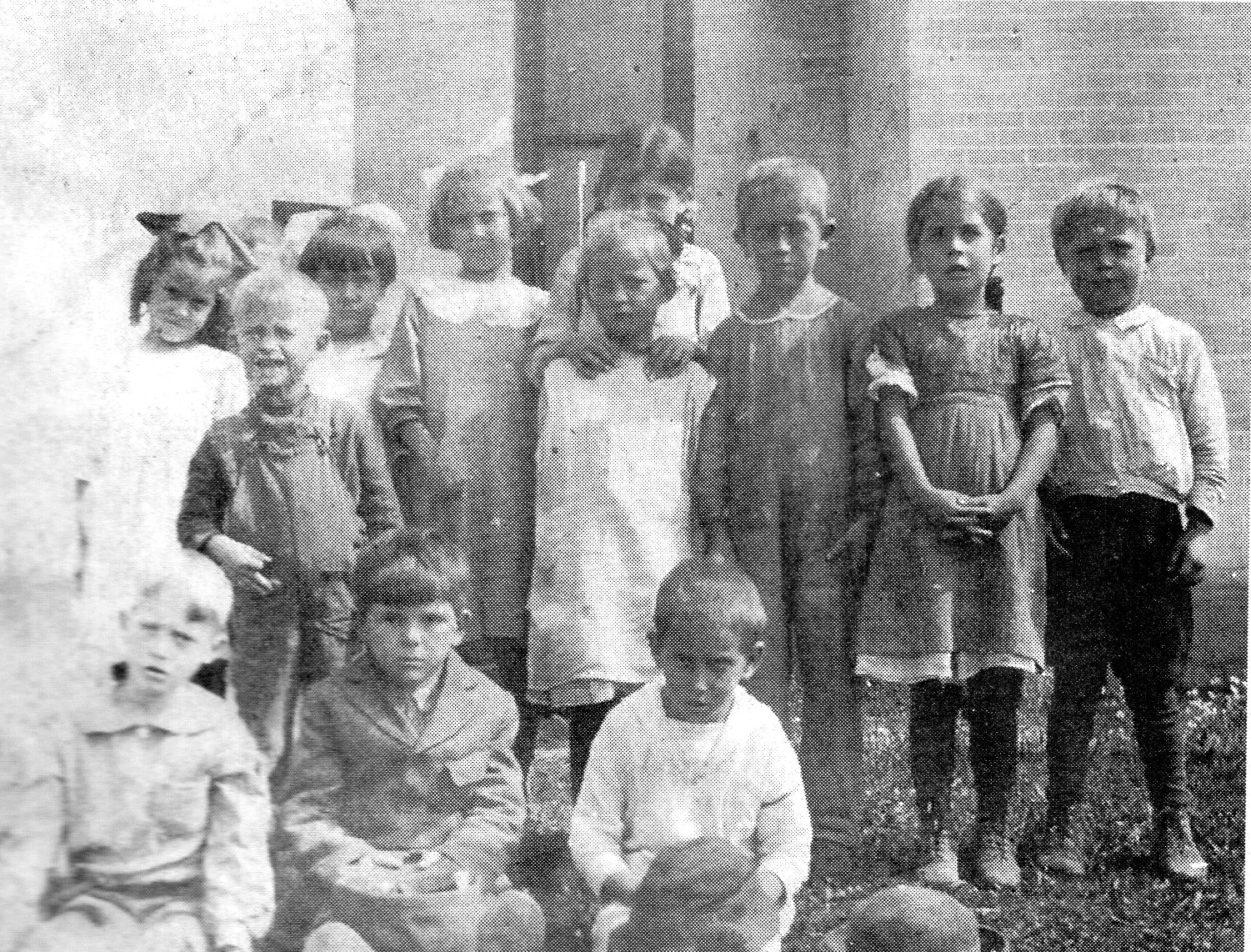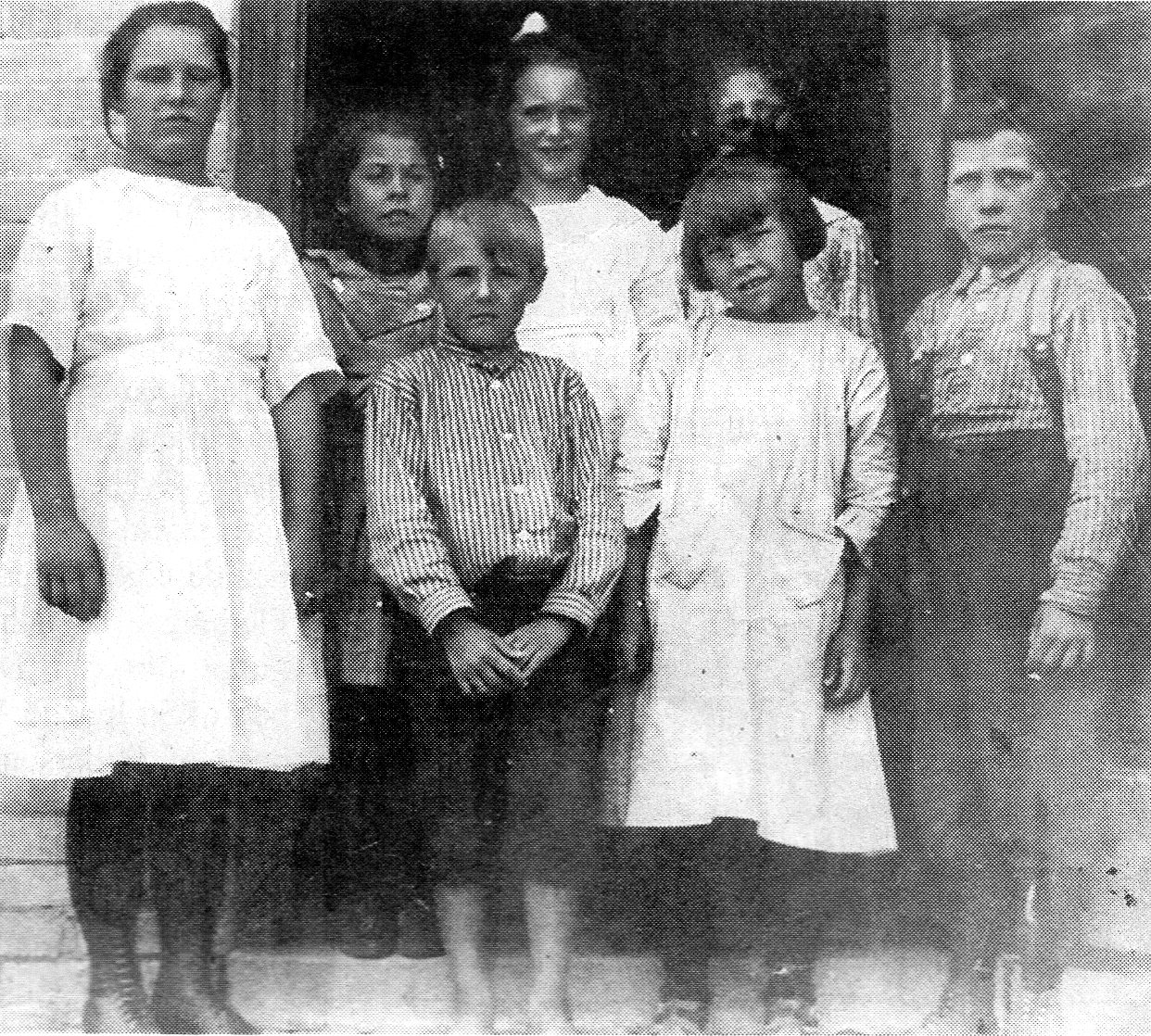
of Pioneer Settlers of Allis
Part V
Submitted by Nute Chapman
From Onaway Outlook January 25, 2013

 |
of Pioneer Settlers of Allis Part V Submitted by Nute Chapman From Onaway Outlook January 25, 2013 |
 |
CAPTION #1: CHART CLASS at the Roberts School in 1921-22. The Chart Class is the same as our kindergarten
class today.
 CAPTION #2: FIRST-GRADE STUDENTS at the Roberts School in 1920, including Art Marshall, Grace Marshall and Lillian Fales.
CAPTION #2: FIRST-GRADE STUDENTS at the Roberts School in 1920, including Art Marshall, Grace Marshall and Lillian Fales.
 CAPTION #3: SECOND-GRADE STUDENTS at the Roberts School in 1921-22.
CAPTION #3: SECOND-GRADE STUDENTS at the Roberts School in 1921-22.
 Unpublished by Oscar Adelbert Roberts and edited by daughter Ruth (Roberts) Schmidt Part V
Unpublished by Oscar Adelbert Roberts and edited by daughter Ruth (Roberts) Schmidt Part V
My Father, John M. Roberts
My father was a strong robust man whose task of making a living for a large family, some of which left home as soon as
they were able to be of much help, caused him to follow a bit too closely the commandments-"Six days shalt thou labor,"
and expected the whole family to work nearly every minute of the day. However, Sunday was the Sabbath, and a day of
complete rest except for attending morning and evening services. He must have had a lot of help from my older brothers,
clearing 30 acres of land, building such a good log house and a large frame barn later. It was 30-by-52 from 18-foot posts
and had a hip roof. The foundation was large cedar logs and was used as a stable for our few cows; two teams, one of horses,
one of oxen; and many extra stalls which were filled at times by teams that hauled supplies to the many lumber camps farther
south, we being just over a day's travel from Cheboygan.
It made a lot of work for my Mother and sisters, preparing meals for teamsters. It seemed my father was always strict,
sometimes severe, and always honest to a fault. But I never knew him to speak an unkind word to my Mother.
Only in recent years have I begun to understand my Father's ambitions, problems, and disappointments, and to admire
his sterling qualities, 40 years too late - such is life!
"Toiling, rejoicing, sorrowing, onward through life he goes. Each morning sees some task begun, each evening sees its
close. Something attempted, something done. He has gained his nights repose. "A quotation from "The Village Blacksmith."
A Day In Spring
It was a lot of fun to go to the "sugar bush" with my father and older brothers, to gather the maple sap to be boiled down
to sugar, or syrup. Thirty to 40 gallons of sap was required to make 1 gallon of syrup weighing 11 pounds. We had about
250 tins, 10-quart pails, which meant we had to tap nearly that many trees. Only the larger trees had more than one
spite and pail. Our sap pan was 3 1/2-feet wide and 8-feet long, and 10-inches deep. It had six partitions in it. These
partitions each had a 1-inch square hole to allow the sap to flow from a small stream into a corner of the first compartment
and by the time it had run its way through succeeding compartments, it was then drawn off and finished further in a 30-gallon
kettle. If you didn't have a sugar house, you took sap home, and carefully boiled it down, stirring and pouring quickly
into tin molds to set.
The Sugar Party
Also every spring, several families would get together and have a "Sugaring Off Party," sometimes at someone's home, but
usually at a sugar bush camp. Sugar was boiled to the sugaring point, each person has a saucer and spoon, and would stir
the thick syrup until it became white and creamy - or it could be poured on the snow to become brittle taffy. Usually a
small fee was charged, and the proceeds went to the church or Sunday school. With no television, radio or picture shows
in those days, these affairs were well attended.
Planting Time
The fields were plowed with a walking plow, in the fall. In the spring one of us boys would harrow the fields a couple of
times, and then Father would sow the seed by hand as was done in Bible times, then it was harrowed again to cover it. As
in the parables, some was too deep, some too shallow, and the fowls of the air picked it up. but some was just right, and
made a crop unless it dried up from lack of rainfall.
Potatoes were dropped by hand in furrows made with a double-shovel plow. Planting beans and corn was easier. Father
made a small planter for seeds like onions, carrots and turnips, but later bought a Planter Jr. - but our rutabagas and mangles
were usually sown broadcast style on newly cleared ground. Our root crops were good, and usually amounted to many, many
bushels - not counting potatoes. The animals were fed some of the root crops.
Continued next week.
-From The Onaway Outlook, January 25, 2013, p 3.
Retyped by J. Anderson.